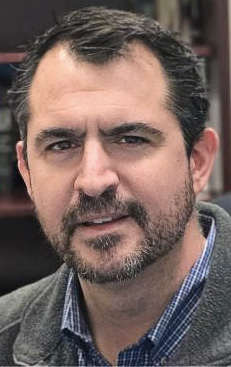

Brand Protection |
Sponsored by |

|





 It may not be widely-known but the big 3 search engines -- Google, Yahoo! and Bing -- have established procedures for removing natural search results on the basis of the Digital Millennium Copyright Act (DMCA). That's good news for brand owners: if consumers can't find infringing websites via the search engines, they're less likely to come across them at all...
It may not be widely-known but the big 3 search engines -- Google, Yahoo! and Bing -- have established procedures for removing natural search results on the basis of the Digital Millennium Copyright Act (DMCA). That's good news for brand owners: if consumers can't find infringing websites via the search engines, they're less likely to come across them at all...
 The FCC has posed a number of provocative questions to AT&T regarding the fact that iPhone subscribers cannot download and use the Google Voice application. AT&T should stifle every motivation to play cute or clever with the FCC. Apple adopted such a strategy when it suggested to the Library of Congress and others that it would be curtains for the free world if iPhone owners could hack, jailbreak, tether, and otherwise use their handsets without fear of violating the prohibition on circumventing copyright laws contained in the Digital Millennium Copyright Act.
The FCC has posed a number of provocative questions to AT&T regarding the fact that iPhone subscribers cannot download and use the Google Voice application. AT&T should stifle every motivation to play cute or clever with the FCC. Apple adopted such a strategy when it suggested to the Library of Congress and others that it would be curtains for the free world if iPhone owners could hack, jailbreak, tether, and otherwise use their handsets without fear of violating the prohibition on circumventing copyright laws contained in the Digital Millennium Copyright Act.
 Apple's Wordwide Developers Conference may have just ended, but already, the conference release of Mac's OS X 10.6 — a beta build previewed for developers — has been leaked onto torrent sites. It borders on irony: for years, Mac lovers have touted the superior security of the Mac operating system over Windows, but earlier this year, it was torrent sites — the very sites where OS X 10.6 is now being freely copied — that caused more than 25,000 Mac users to fall victim to the iServices Trojan. Some Macs never learn.
Apple's Wordwide Developers Conference may have just ended, but already, the conference release of Mac's OS X 10.6 — a beta build previewed for developers — has been leaked onto torrent sites. It borders on irony: for years, Mac lovers have touted the superior security of the Mac operating system over Windows, but earlier this year, it was torrent sites — the very sites where OS X 10.6 is now being freely copied — that caused more than 25,000 Mac users to fall victim to the iServices Trojan. Some Macs never learn.
 Like many in the UK communications industry my colleagues and I at Entanet have been eagerly awaiting the Digital Britain report. Darren Farnden, Entanet's Head of Marketing, has posted an interesting assessment of key parts of the report at opinion.enta.net. Given the content of Darren's article I thought it would be useful to post it in full here for CircleID readers...
Like many in the UK communications industry my colleagues and I at Entanet have been eagerly awaiting the Digital Britain report. Darren Farnden, Entanet's Head of Marketing, has posted an interesting assessment of key parts of the report at opinion.enta.net. Given the content of Darren's article I thought it would be useful to post it in full here for CircleID readers...
 A very good friend of mine is an archivist with the Ontario government, and we share similar views on how technology is impacting modern life. He passed a really interesting item along that ran in yesterday's Washington Post. Some of you may be following this – Google's Book Search Settlement. I can definitely see how this has a direct bearing on the archive space, but also how it touches on a few tangents of my world – emerging communications technologies.
A very good friend of mine is an archivist with the Ontario government, and we share similar views on how technology is impacting modern life. He passed a really interesting item along that ran in yesterday's Washington Post. Some of you may be following this – Google's Book Search Settlement. I can definitely see how this has a direct bearing on the archive space, but also how it touches on a few tangents of my world – emerging communications technologies.
 Potential trademark Rights Protection Mechanisms (RPM) at the 2nd level can be divided into three main areas -- each defined by their time relative to Top-Level Domain (TLD) launch... Of these, we believe the third, "After Launch," is the most fruitful path to explore. We believe it offers the most potential to protect the rights of trademark holders, the best balance between TM rights and the legitimate rights of others who may want to register names , and the most benefit to the trademark community at the lowest cost to them...
Potential trademark Rights Protection Mechanisms (RPM) at the 2nd level can be divided into three main areas -- each defined by their time relative to Top-Level Domain (TLD) launch... Of these, we believe the third, "After Launch," is the most fruitful path to explore. We believe it offers the most potential to protect the rights of trademark holders, the best balance between TM rights and the legitimate rights of others who may want to register names , and the most benefit to the trademark community at the lowest cost to them...
 The Wall Street Journal and others are reporting that the Recording Industry Association of America is adjusting its strategy for combating the massive infringement occasioned by the sharing of music files over the internet. Since 2003, that strategy has been to pursue copyright infringement cases against individual file sharers. The RIAA now says it will focus less on pursuing infringement litigation and more on working with internet service providers to shut down the accounts of individuals suspected of illegally trading files.
The Wall Street Journal and others are reporting that the Recording Industry Association of America is adjusting its strategy for combating the massive infringement occasioned by the sharing of music files over the internet. Since 2003, that strategy has been to pursue copyright infringement cases against individual file sharers. The RIAA now says it will focus less on pursuing infringement litigation and more on working with internet service providers to shut down the accounts of individuals suspected of illegally trading files.
 It is ICANN's responsibility to make sure domain names do not infringe on trademarks. To determine infringement, ICANN should rely in the short term on predictive models. Thus, domain name and trademark owners must start putting pressure on ICANN to assume its trademark responsibility.
It is ICANN's responsibility to make sure domain names do not infringe on trademarks. To determine infringement, ICANN should rely in the short term on predictive models. Thus, domain name and trademark owners must start putting pressure on ICANN to assume its trademark responsibility.
 As ICANN introduces new generic top level domains (gTLDs) and separates itself from US oversight, it has the opportunity to distance itself from the taint of cybersquatting, brand abuse, and criminal activity involving domains... To underscore the scope of the issue, consider this research on just 30 top Interbrand-ranked global brands. The most recent MarkMonitor Brandjacking Index found cybersquatting incidents increased over 40% in the last year for the brands that were studied; these leading brands suffered as many as 15,000 incidents per brand...
As ICANN introduces new generic top level domains (gTLDs) and separates itself from US oversight, it has the opportunity to distance itself from the taint of cybersquatting, brand abuse, and criminal activity involving domains... To underscore the scope of the issue, consider this research on just 30 top Interbrand-ranked global brands. The most recent MarkMonitor Brandjacking Index found cybersquatting incidents increased over 40% in the last year for the brands that were studied; these leading brands suffered as many as 15,000 incidents per brand...
 My friend Kevin Thompson over at Cyberlaw Central reminded me this morning in this post that President Clinton signed the Digital Millennium Copyright Act ten years ago today. Tempus fugit. It's interesting to reflect on how this critical piece of legislation has affected (I think fostered) the growth of the online infrastructure with its safe harbor provisions found at 17 U.S.C. 512.
My friend Kevin Thompson over at Cyberlaw Central reminded me this morning in this post that President Clinton signed the Digital Millennium Copyright Act ten years ago today. Tempus fugit. It's interesting to reflect on how this critical piece of legislation has affected (I think fostered) the growth of the online infrastructure with its safe harbor provisions found at 17 U.S.C. 512.